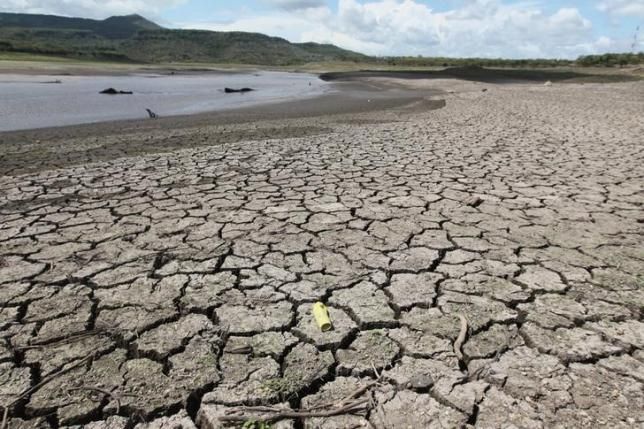 | « Back to article | Print this article |

After a hotter than usual summer, a better monsoon would boost agriculture, rural demand
Reserve Bank of India Governor Raghuram Rajan’s hopes of a normal monsoon this year -- after two back-to-back droughts -- to boost rural demand could be fulfilled.
Though the summer is expected to be hotter than usual, global and domestic forecasts point to good rains this year.
Officials of both the weather department and private forecasters said the rainfall this year could be normal, with some forecasting it to be 102-103 per cent of the Long Period Average.
A monsoon is considered normal if rain during the June to September season is 96-104 per cent of the LPA.
The LPA is average seasonal rainfall over the country in the past 50 years, starting from 1951.
It is estimated, at present, to be 89 cm.
“As of now, nothing is looking bad about the southwest monsoon this year. But, we are waiting for some more data, after which we will come out with our first seasonal forecast,” D S Pai, deputy director general, climatology, India Meteorological Department, told Business Standard.
The first official forecast of the IMD for the 2016 monsoon is expected to released around April 20.
Other weather observers are also of the opinion that the rains this year could be good.
The Pune-based Indian Institute of Tropical Meteorology, in a forecast based on February data, had said there is a 54 per cent chance of the June-September precipitation being 10 mm per day -- more than normal.
“All global models are pointing towards a normal monsoon in India this year, with a possibility of it being on the higher side of the LPA, that is, more than 100 per cent,” Mahesh Palawat, the chief meteorologist at the private weather forecasting company Skymet said.
Skymet had predicted the 2009 drought correctly, but last year, its first forecast was off the mark from the actual rains.
On April 1, Weather Risk Management Services, a Gurgaon-based private forecaster, had also said monsoon this year would be better than normal.
The main reason why meteorologists are optimistic about the monsoon is the waning of Niño, a weather phenomenon which has been blamed for the 2014 and 2015 droughts.
This is only the fourth time in the past 115 years that there have been droughts on consecutive years.
El Niño is a climate cycle in the equatorial Pacific Ocean, with warm water pools near Indonesia and the Philippines.
This year, all weather models indicate that by the time the southwest monsoon hits the Kerala coast around June 1, El Niño would have waned and by the time the season ends in September, La Niña would have set in.
La Niña is the anti of El Niño, making waters in east central Pacific Ocean three to five degrees lower than normal.
The Australian Weather Bureau, too, in its last forecast said El Niño continues to wane and sea-surface temperatures are coolest since January 2015.
For India, all of these are positive indications.“The wetter-than-usual conditions in the western Pacific persist throughout a La Niña event. There is also a possibility of a prolonged Indian monsoon.
"However, this depends on whether or not the Indian Ocean will be able to cope with the Pacific,” a report by Natixis Commodities Research said.
But, given the false starts that southwest monsoon had shown in 2014 and 2015, not all are convinced.
Some feel that the distribution of monsoon would hold the key.
“Last year, when we had a drought, the agriculture gross domestic product grew at 1.1 per cent.
"But that, too, will go down as the impact of the damage caused to the rabi crop by unseasonal rain hasn’t been factored in yet.
"So, if the rains are normal in 2016, the agriculture GDP might rise to two to three per cent in 2016-17,” Madan Sabnavis, chief economist, CARE Ratings said.
He added the overall scenario, as of now, looks positive. “But, given the experience of the last two years, we should not be worried. Distribution is extremely important in the Indian context.”
CLOUDS OF HOPE
More rains could provide the much-needed fillip to different sectors
Agriculture
Could push agriculture gross domestic growth in 2016-17 to over 2%. Overall kharif production of foodgrain, which had dipped to 124.24 million tonnes in 2015-16 from128.06 million tonnes in 2014-15, might improve
Water crisis
The rains would also fill up reservoirs in the western and southern parts of the country, many of which have dried up. That would help mitigate the drinking water crisis, which led to the Latur riots last month
Rural demand
Overall rural consumption, which has slumped to a multi-year low, because of consecutive droughts and a historic fall in product prices, would get a big boost from a good monsoon
Drought alleviation
In the past 100 years, three consecutive droughts have been unheard of. The drought over the past two years were the fourth case of consecutive all-India droughts in the past 115 years.
All global models indicate the El Niño effect is waning